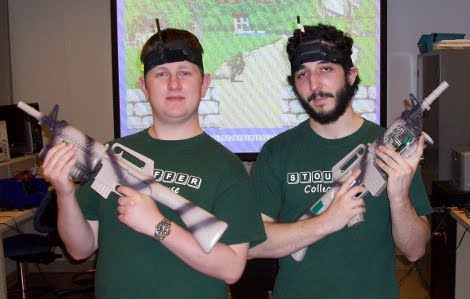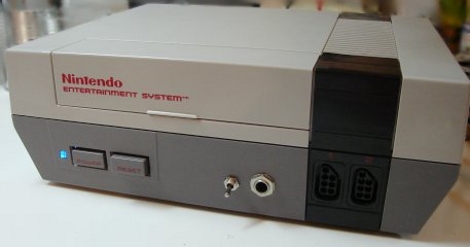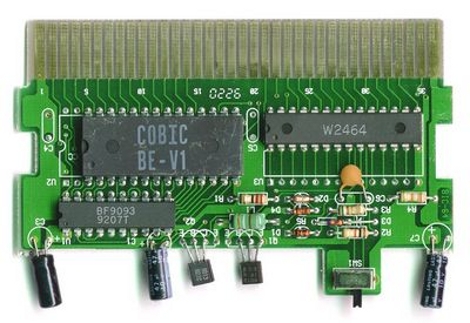
nes204 Articles
Gaming’s Newest Accessory: Headbands

These aren’t terrorists, they’re electrical engineering students. For their final project they developed a headband and rifle input system for the NES. The controllers send data to a laptop which then maps out the inputs to NES controller commands and sends them to an original NES console, no emulation here.
The controllers in the headband and rifle are Firefly sensor network nodes. Originally, [Kevin] and [Evan] tried using accelerometers for motion information but found the data do be unreliable. After an upgrade to gyroscope modules the interface is much more responsive, as seen about 3:50 into the video after the break. We like seeing motion controller hacks and we appreciate the choice of a classic system (and lesser known game title). This really makes it a whole different game.
Original NES Plays Game Boy Games?

[Bunnyboy] pulled off some wizardry with this custom NES cartridge. Inside is the mainboard for a Game Boy as well as his own custom PCB with the comb connector needed to interface with an original Nintendo Entertainment System. In his own words it’s “a Super Game Boy without the Super”. The expansion port to for the handheld is still accessible for some head-to-head Tetris or use with the obscure Game Boy printer.
[Thanks Maxym]
Making A Bluetooth SNES Controller
[youtube=http://www.youtube.com/watch?v=OP8JgqmVES8&]
[MODDEDbyBACTERIA] has posted this instructible on how to make a bluetooth SNES controller. The bulk of the parts come from a bluetooth MSI game pad, so this isn’t a scratch build, but the amount of modifications required definitely qualify this as a hack. We were quite surprised that he managed to stuff all of that back into the case as well as he did. Great job.
Repair Or Improve Your NES

There’s a warm place in our hearts for the original Nintendo Entertainment System. It’s too bad we don’t have that hardware sitting around anymore. But if you do there’s a chance it needs some TLC and there’s always room for a blue LED mod. [Raph] has a wonderful collection of NES hardware repairs and hacks that you should take a look at. These include replacing the power supply, fixing the cartridge connector, monkeying with the CIC chip, adding a reset button on the controller, converting the audio from mono to stereo, and yes, swapping in a blue LED. Oh, and as a side note, [Raph] gets a bit of extra hacker ‘cred for including “coded manually using VIM” at the bottom of his page. Classic.
NES Console To Cartridge Security In Depth

[Segher] has reverse engineered the hardware and command set for the NES CIC chips. These chips make up the security hardware that validates a cartridge to make sure it has been licensed by Nintendo. Only after authentication will the console’s CIC chip stop reseting the hardware at 1 Hz. The was no hardware information available for these chips (go figure) so [Segher] had to do some sleuthing with the tools at hand which include some rom dumps from the chip pairs. He was nice enough to share his findings with us. We’re betting they’re not of much use to you but we found it an interesting read.
[Thank ppcasm]
[Photo credit: Breaking Eggs and Making Omelets]
Cubicle-dwellers Rewarded For Reflexes
[youtube=http://www.youtube.com/watch?v=kUqRcLjFOUc]
[StudioJooj] is trying to torture or test his colleagues in his office. A lot of folks leave a candy jar on their desks for all to enjoy but he’s making his friends work for their reward. Like cubicle-dwelling lab subjects, they must successfully navigate his maze to be rewarded with chocolate. The game piece is an amazingly orb-like peanut M&M candy. The maze is constructed from plywood and moves on two axis with the help of a couple of servos. The user interface includes a couple of NES console buttons to release the game piece and a PS2 joystick to control the maze. [StudioJooj] was nice enough to include a music video in his project clip.
We wonder the M&Ms will disappear faster or slower than they would from a candy jar.
[via SparkFun]










